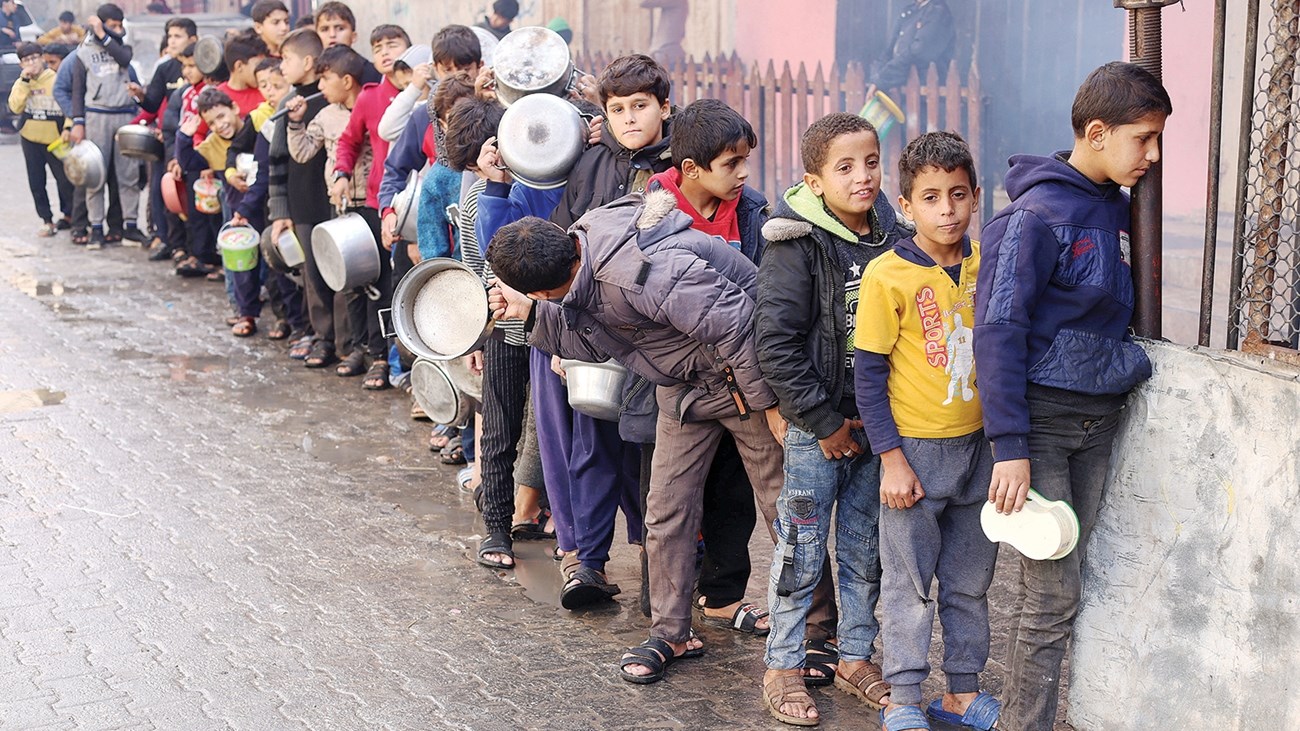NEW YORK June 26. 2024 (Saba) - An international report warned of the continued high risk of famine throughout the Gaza Strip, in light of the continued Zionist aggression and restrictions on humanitarian access.
Some 96 per cent of Gaza's population (2.1 million people) face high levels of acute food insecurity, the report said, predicting that this situation will continue until September 2024.
According to the Integrated Food Security Phase Classification (IPC), the entire Gaza Strip is classified as being in a state of emergency, which is the fourth stage of classification that precedes famine (phase five).
More than 495,000 people (22% of the population) face catastrophic levels of acute food insecurity in phase five, in which households face severe food shortages, starvation and resilience, the report said.
The taxonomic analysis in February predicted that famine would occur in areas of northern Gaza by the end of May, based on the assumption that the conflict would continue with the same intensity as humanitarian access would continue to decline. March and April saw increased deliveries of food and nutritional services to the northern governorates, although there were some obstacles.
This appears to have temporarily eased conditions in northern Gaza, the report said. But the WFP said the slight improvement showed the difference that increased humanitarian access could make, as increased distribution of food and nutrition services in the north had helped reduce the worst levels of hunger, although the situation remained dire.
In the southern governorates of Gaza, the report said that the situation deteriorated in early May, with more than a million people displaced after attacks from land and sea across the Gaza Strip and their expansion to Deir al-Balah, especially Nuseirat camp.
Humanitarian access to the southern governorates, home to two million people, has been significantly reduced with the closure of the Rafah border crossing and obstacles at the Kerem Shalom crossing.
He pointed out that the concentration of the population in areas that are largely lacking in water, sanitation, hygiene, health care and other infrastructure, increases the risk of disease outbreaks, which will have catastrophic effects on the nutrition and health status of large segments of the population.
According to the latest data, more than half of households had to exchange their clothes for money to buy food, while a third of households resorted to collecting waste to sell.
More than half of households often reported having no food, and more than 20% of households spend whole days and nights without eating.
More than 330,000 tonnes of waste has accumulated in or near populated areas across Gaza, posing catastrophic environmental and health risks.
According to the United Nations, the IPC employs experts from 19 UN agencies and four donor countries and tracks hunger, but it can sound the alarm before the potential spread of acute malnutrition to avoid turning into more serious, life-threatening conditions.
E.M
resource : Saba

| more of (International) |




